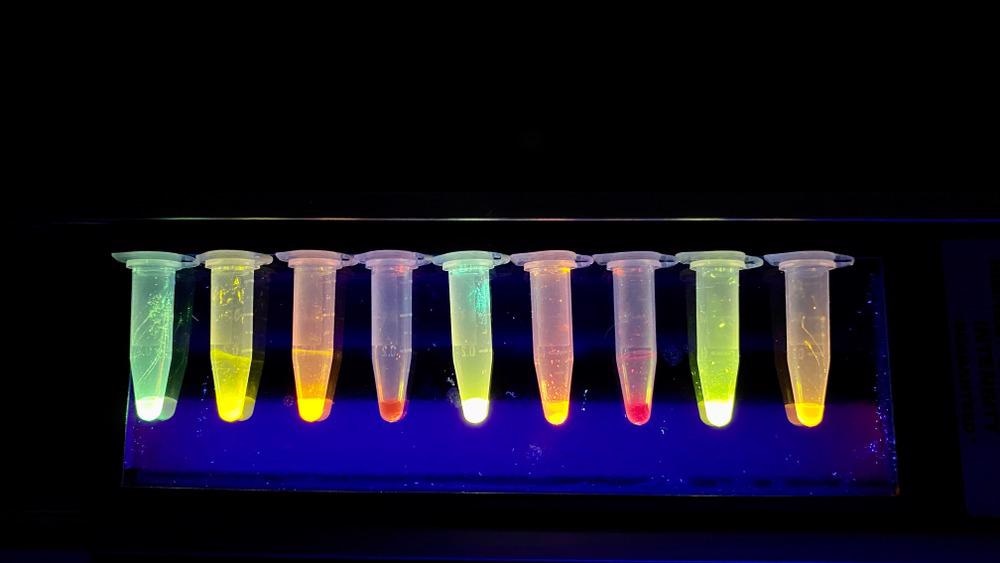Achieving green synthesis of dyes and the dyeing process is critical for the sustainability and environmental friendliness of the textiles industry. To investigate this potential, a team of scientists from China has published a paper, currently in the pre-proof stage, in the journal Dyes and Pigments.

Study: Cleaner production of disperse florescent dyes in supercritical CO2 and their applications in dyeing polyester fabric. Image Credit: Fluke Cha/Shutterstock.com
Textile Dyeing: An Environmentally Harmful Process
The global textiles industry is worth nearly one trillion dollars. With the rapid growth in the world population over the past few decades, there is a need for high-quality fabrics for domestic and industrial purposes.
However, with this rapid growth and the demands on the global textiles industry has come a huge problem with environmental damage and sustainability. Synthetic dyes are favored in the modern textiles industry, and their synthesis en masse is costly and highly energy and resource-intensive. Copious amounts of wastewater which are generated by textiles factories leach toxic organic solvents into the environment where they can accumulate and cause massive pollution and harm to both marine organisms and humans.
The environmental damage of the textiles industry has been well-documented in recent years, and the urgent and pressing need to mitigate the harm caused by the dyeing and production of fabrics and textiles has facilitated the search for alternative dyes, synthesis, and dyeing methods. Furthermore, there is a pressing need for non-toxic, biodegradable, and sustainable solvents in the dyeing industry.
Supercritical CO2
Supercritical CO2 is produced from CO2 by applying pressure and temperature. This chemical possesses several advantageous properties for use as a solvent in dyeing processes, including low viscosity, lack of toxicity, and high permeability and solubility. It has been explored for several applications, including enzymatic reactions and styrene oxidation.
The use of this chemical as a solvent has been extensively explored in recent years. Using the chemical in this way addresses key economic and environmental challenges in the global textiles industry, including tackling the problem of wastewater pollutants due to being a water-free process. Moreover, it opens the door to cleaner methods of synthesizing dyes and dyeing textiles.
Since the late 1980s, several studies have been performed into the use of this chemical as a solvent for use in dyeing methods. However, many studies have still used common synthetic dyes which are typically synthesized or purchased before dyeing. Realizing a truly green process has so far eluded researchers.
The Study
The study has investigated using supercritical CO2 as a medium for both the synthesis and dyeing steps to facilitate the development of a synchronous method.
More from AZoM: Particle Size Distribution Analysis of Flour
The authors have noted that finding dyes that are compatible with this method is key to achieving this synchronous green technique. In the current literature, azo dyes are widely considered to be the most suitable types of dye. However, there is a major issue with using these dyes, which makes it impossible to properly synthesize them using supercritical CO2.
The issue is one of temperature. The formation of intermediate azo salts is an important step in the synthesis of these dyes. This reaction occurs at a much lower temperature than the temperature required for supercritical CO2 formation.
However, there are other types of dyes that are more suitable for this process. These include fluorescent dyes such as coumarin and derivatives of naphthalimide. These types of dye possess superior solubility in this solvent. Whilst they have been the subject of a few studies already reported in the current literature, previous research has still synthesized these dyes using organic solvents.
Another issue with these dyes is their preparation method. Reduction of nitro to amino is the most common one used, which is extremely harmful to the environment.
In the research, the authors synthesized precursors with nitro groups which were then catalytically reduced using supercritical CO2. This process produced fluorescent dyes with superior photophysical properties. The authors compared the synchronous method presented in their research with commonly used stepwise processes and demonstrated that their method was superior.
Additionally, the authors investigated how colorfast dyed materials were in response to factors such as sunlight and everyday use under optimal conditions. The results of their analysis were promising.
Based on the results of the experimental observations in the research, this novel process can help facilitate the development of a more sustainable and green textiles industry. This will meet the commitments the industry has made to reduce its environmental damage in the coming decades in line with international agreements.
Supercritical CO2 is a highly useful chemical that has been used for a variety of purposes already, and this research demonstrates its suitability as a solvent for the green synthesis of dyes and the dyeing of polyester fabrics, which will have huge implications for the entire textiles industry going forward.
Further Reading
Hou, J et al. (2022) Cleaner production of disperse florescent dyes in supercritical CO2 and their applications in dyeing polyester fabric [online, pre-proof] Dyes and Pigments 110250 | sciencedirect.com. Available at: https://www.sciencedirect.com/science/article/abs/pii/S0143720822001723
Disclaimer: The views expressed here are those of the author expressed in their private capacity and do not necessarily represent the views of AZoM.com Limited T/A AZoNetwork the owner and operator of this website. This disclaimer forms part of the Terms and conditions of use of this website.